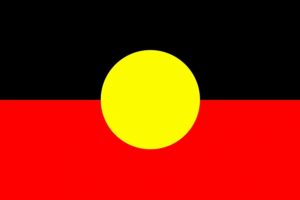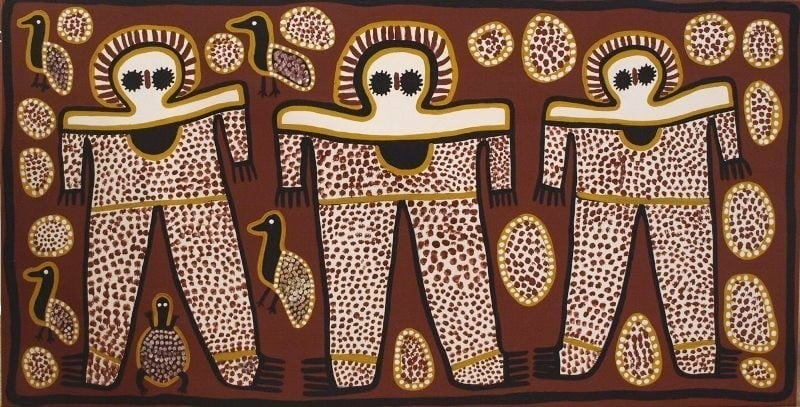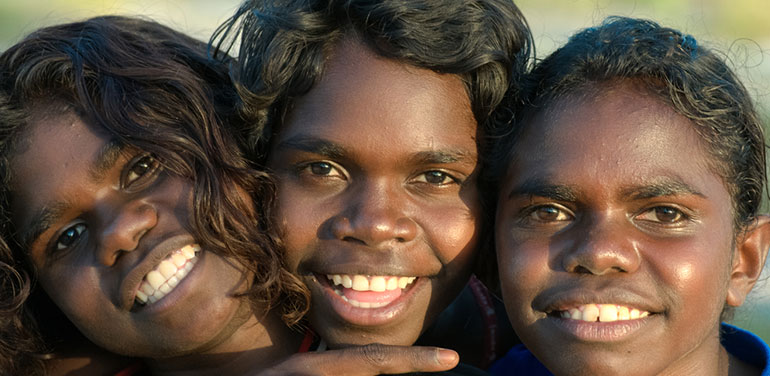Aboriginal People Of Australia
For my blog I decided to talk about the Aboriginal People Of Australia. Watching that National Geographic video about them intrigued me and I wanted to learn more. So thats what I did. Honestly before watching that National Geographic video I've never really heard about aboriginal people until now. Im glad this Australia unit could make me aware of this.
Aboriginal people are one of the two distinct groups of Indigenous peoples of Australia. They are also known as the Nations first group of people.They formed one of the oldest societies on earth. It's said that they originally come from Asia and have been in Australia for a bout 60,000 years. They are not one group, but rather hundreds of groups that have their own distinct set of languages, histories and cultural traditions. This is a very family orientated group of people. They would hold large gatherings often. Aboriginal cultures were strong and well developed, Aboriginal communities were self-determining, and Aboriginal children were nurtured and protected.

 |
| Aboriginal Flag |
The Stolen Generations are Aboriginal people were taken away from their families and communities when they were children as the result of past government policies. Children were removed by governments, churches and welfare bodies to be brought up in centers, fostered out or adopted by white families. The removal of these children broke cultural, spiritual, and family ties which left a lasting impact on these groups of people.
 Aboriginal people have a deep connection with their land or country. This connection remains despite all the people who no longer live on their land. They describe land as sustaining and comforting, fundamental to their health, their relationships, culture, and identity. For Aboriginal people, their traditional Country and what it represents in connection with their history, survival, resilience and cultural and spiritual identity gives them much to take pride in.
Aboriginal people have a deep connection with their land or country. This connection remains despite all the people who no longer live on their land. They describe land as sustaining and comforting, fundamental to their health, their relationships, culture, and identity. For Aboriginal people, their traditional Country and what it represents in connection with their history, survival, resilience and cultural and spiritual identity gives them much to take pride in.
Let's no forget about aboriginal art, their are it world famous. Many aboriginals make a living off selling their artwork. Traditionally, they view art much like their dreaming sacred and secret. Only a select few of people are allowed to see their masterpieces.Aboriginal art comes in many different aspects: paintings, beadwork, woodwork, bark paintings and baskets. But some art can't be sold, it's on cave walls and museums. Aboriginal Australians also make and sell the most famous item to come out of Australia: the boomerang.

In the past they lived very isolated away from everyone on tiny little islands around Australia. They lived off hunting and gathering. They were experts in seeking out water. They were known for always having their land stolen or destroyed from them. The initial invasions also sparked a wave of diseases that killed thousands of them, others were massacred. In over just 100 years from the first invasion, their numbers dropped dramatically.
Today about 400 000 Aborigines live in Australia and they form only about 2 % of the population of Australia. They are struggling to keep their culture and heritage alive. They are trying to fight for recognition from the Australian government. They also still face racial issues and incidents of violence towards them. Their generally poor living conditions means that aboriginal people have a higher infant mortality rate and a lower life expectancy rate. Although all the hardships they continue to face, they remain very strong and resilient. They are a very tight knit community. Aboriginal culture, however, has also become more and more commercialized as it has become very popular as a tourist attraction over the years.
Works Cited
Tonkinson, Robert. “Australian Aboriginal Peoples.” Encyclopædia Britannica, Encyclopædia Britannica, Inc., 19 Apr. 2018, https://www.britannica.com/topic/Australian-Aboriginal.
Blakemore, Erin. “Aboriginal Australians, Facts and Information.” Culture, National Geographic, 31 Jan. 2019, https://www.nationalgeographic.com/culture/article/aboriginal-australians.
Korff, Jens. “Aboriginal Population in Australia.” Creative Spirits, 23 Apr. 2016, https://www.creativespirits.info/aboriginalculture/people/aboriginal-population-in-australia.
Roschester, Lorauine. “Profile of Indigenous Australians.” Australian Institute of Health and Welfare, 3 July 2020, https://www.aihw.gov.au/reports/australias-welfare/profile-of-indigenous-australians.
“Aboriginal Peoples.” Survival International, Survival International, 3 May 2019, https://www.survivalinternational.org/tribes/aboriginals.
Percy, Silka. “How Aboriginal Culture Influenced Art in Australia Today.” Widewalls, 16 Mar. 2019, https://www.widewalls.ch/magazine/aboriginal-culture-art-importance.
Comments
Post a Comment